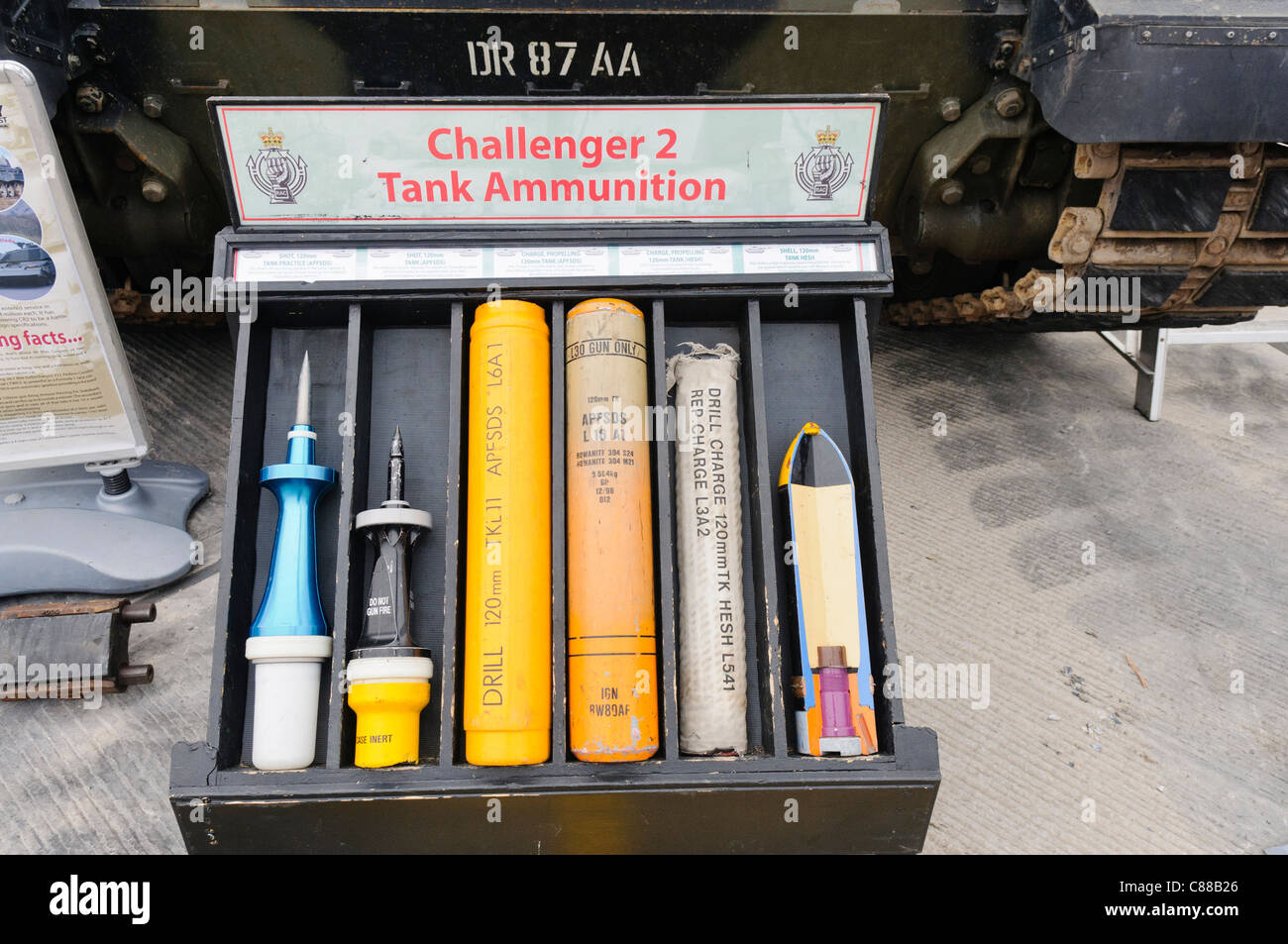|
Eela6 posted:This is a fantastic explanation. I can see why it makes such a big difference. How many times are you expected to do this during a battle? Is physical exhaustion a major factor in battle for these soldiers? As many times as you have the ammo to do so, but usually less. Wikipedia says a 76mm Sherman carried 71 rounds, of which some would be only useful for specific purposes - smoke ammo won't do much else, unless it's white phosphorus, and that wasn't made in 76mm. (Again, Wikipedia, because I don't know this offhand and can't get to anything more reliable from work.) Note also that you may be resupplied at some point, so enjoy stuffing more of these sumbitches into your stowage via the hatch, and, as always, anything else you might have to do to keep the big iron bitch functional. But hey, at least you don't have to walk, right? (Unless/until it breaks down/is disabled, of course.) 
|
|
|
|

|
| # ? May 19, 2024 14:10 |
|
Gnoman posted:That is because they insisted on keeping one-piece ammo. Most of the time guns at that power level used two-piece ammo, were you shove in the round then shove in the charge. Of course, the Panther can pretty accurately be described as "Bad decisions: The Tank", so that's nothing unusual. Pretty much every tank gun under 100mm in WWII used one piece ammo, even the larger 88 rounds in the Tigers. For the Germans only the 12.8cm in the Jagdtiger used two piece ammo.
|
|
|
|
Koramei posted:Those dumb Mongols not using shields, this must be why they always did so badly in battles. Now where did I say that? Speaking of, why didn't samurais like shields? Or was it just that Europeans lurved shields and therefore used them more?
|
|
|
Taerkar posted:Pretty much every tank gun under 100mm in WWII used one piece ammo, even the larger 88 rounds in the Tigers. For the Germans only the 12.8cm in the Jagdtiger used two piece ammo. That is true, but pretty much every WWII gun under 100mm was of a sensible power level. The Panther's gun was of literally insane length (the only other gun I'm aware of that was 70 calibers long was a 1950s version of the 40mm Bofors trying to cope with jet aircraft) to get the crazy level of penetration they wanted out of it. The size of the round was much closer to what a unitary 122mm round would be than it was a normal 75mm round.
|
|
|
|
|
Gnoman posted:That is true, but pretty much every WWII gun under 100mm was of a sensible power level. The Panther's gun was of literally insane length (the only other gun I'm aware of that was 70 calibers long was a 1950s version of the 40mm Bofors trying to cope with jet aircraft) to get the crazy level of penetration they wanted out of it. The size of the round was much closer to what a unitary 122mm round would be than it was a normal 75mm round. The USN developed a 3"/70 anti-aircraft gun right after World War Two. That's the only other gun of that length I can think of.
|
|
|
Hogge Wild posted:Now where did I say that? I'm not an expert on Japan far from it but I assume it has something to do with the generally poor quality of Japanese iron ore. When you've only got so much decent iron to go around a shield is a secondary priority. Again guessing that since the samurai started off as mounted archers and remained so for a big chunk of their history shields don't do you much good in a mounted archery duel. Also there's the interesting theory I read somewhere that Japanese sword styles evolved from spear fighting so a two-handed sword was considered to be a must have for cultural and traditional reasons. Or it could be a combination of all of the above. Still i'd appreciate it if a goon who knows what they're talking about can give you something more than my idle speculation.
|
|
|
|
|
What happened to make one-piece 120mm a feasible tank round to have a guy shove into the breech for the duration of a battle?
|
|
|
|
Samurai used shields just like everyone else, but for them a shield was a big piece of wood you stuck in the ground. Temples frequently complained about looting because their gates made ideal war material and were usually the first thing to go once an army rolled into a region.
|
|
|
|
The 2nd Boer War is to a majority of people on the British Isles a long forgotten yellowed late Victorian memory, unless of course you came from South Africa or somehow you are a incredibly ancient British Army relic tucked up in the corner of your gentlemans club preserved by a century of gin. It was the last in a series of Victorian Imperial colonial wars, brutal, grim and bloody. It made the careeers of some army men, broke the careers of statesmen too on both sides. Echoes of the Industrial colonial conflicts can be seen it with brief terrible glimpses of bigger more horrible things to come in new century the war finds itself awkwardly stumbing into. And of course like all conflicts it was fought from the ground up still by soldiers who struggled and endeared hardships we can barely imagine putting up in our modern daily lives. This brief war diary covers the duties of 2874 L/Cpl. A. W Rose, I believe a English soldier from the city of Birmingham who has been serving under the colours of Queen Victoria since the early 1880's in the regiment of the Duke Of Cornwalls Light Infantry. His diary only covers the first few years of the war with Rose seeing a majority of the fighting before being rotated back out for home and other services. The original diary I believed was transcribed from paper by the historian that works at said musuem and if this sort of thing interests you do feel free to pick this book up (seems to be one of the few of his on Amazon annoyingly so) or drop by the musuem yourself in Bodmin, Cornwall if you are goon in the UK/visiting the UK. I have copied the text exactly as it was transcribed from paper, I've occasionally added a word or two in closed brackets for ease of reading as Rose can be quite brief sometimes in sentences, what with writing half of this stuff out crudely at the end of a day in the dark in a trench scrape, tent or on a train carriage. I've also taken some mostly relevant images from Wiki commons and included the footnotes from the diary as well. Sometimes there are places the original Historian cannot find that exist anymore due either the name not being the official one or the simple fact it was a South African one horse town and time has erased it from modern maps. I know how you all like reading about soldiers doing their own thing so enjoy! Part 1: Arriving in South Africa Part 2: The Reality of Combat/Getting Stuck In/WATERSPORTS! Part 3: March Marching Madness/Trench Sniping/CANADIANS! Part 4: Boer Guns, Hunger Marches and Bloody Charges With The Gordon Highlanders Part 5: Occupying Pretoria, Rest And Christmas In South Africa. Part 6: Signal Flags, Skirmishes and South African train rides Part 7: Final Duties, Crossing the Ocean and Epilogue. Part 1: Arriving In South Africa. quote:
It won't be all gawping at the wounded and digestive abilities of giant birds, It has only begun. SeanBeansShako fucked around with this message at 14:11 on Apr 26, 2017 |
|
|
|
aphid_licker posted:What happened to make one-piece 120mm a feasible tank round to have a guy shove into the breech for the duration of a battle? Here's the inside of an M1A2 Abrams during firing. https://www.youtube.com/watch?v=sC2ePKRvo9k There's a number of different things at work. The turret is large enough for a loader of sufficiently short height to stand up straight or nearly straight and have plenty of room to move around. The ammo is kept behind a sliding panel with the rounds positioned for easy access, where the loader just has to pull the round out and rotate his body to swing the shell into the breech. The shell is heavier, about 41 pounds vs. the 22 to 27 pounds of an American 76mm gun shell from World War II, but I think the ergonomics and turret room have a lot to do with making fast loading possible. For comparison, here's loading an M18 Hellcat with that 76mm gun. https://www.youtube.com/watch?v=6NTyGZ_PfTA The shell is kept in a rack next to the gun, so it needs to be pulled all the way out and then pushed into a hole next to the rack. chitoryu12 fucked around with this message at 23:38 on Apr 20, 2017 |
|
|
|
|
Ferrosol posted:I'm not an expert on Japan far from it but I assume it has something to do with the generally poor quality of Japanese iron ore. When you've only got so much decent iron to go around a shield is a secondary priority. Again guessing that since the samurai started off as mounted archers and remained so for a big chunk of their history shields don't do you much good in a mounted archery duel. Also there's the interesting theory I read somewhere that Japanese sword styles evolved from spear fighting so a two-handed sword was considered to be a must have for cultural and traditional reasons. Or it could be a combination of all of the above. Still i'd appreciate it if a goon who knows what they're talking about can give you something more than my idle speculation. You don't really need iron for a decent shield to save yourself from blows that could otherwise kill you. Wood works fine enough because it turns out it's really difficult to actually cut wood with a light weapon. At best you'll cut/thrust through it and then have to wrench it out which gives your opponent a chance to stab you in the face.
|
|
|
|
Mm, most shields throughout history have been big honking slabs of wood. If it breaks you just cut down a tree and make another one, your army is going to be deforesting wherever it goes anyway because it needs fuel and probably some rudimentary carpentry on your baggage train if you have one. If you came by boat you definitely have carpenters handy. If you're going to be siegeing anywhere then you also have some. Metal's good when you want fancy shaped shields, or lighter shields that still work, or small shields that can still stop blows, or for the middle of a wooden shield where it's just really useful to build off of, but an all metal shield is probably more of an oddity than a rule.
|
|
|
|
aphid_licker posted:What happened to make one-piece 120mm a feasible tank round to have a guy shove into the breech for the duration of a battle? I think the biggest difference is the way the ammo is designed: the AP rounds from WWII were basically just scaled up rifle cartridges, a big brass casing filled with powder and a projectile on top. Modern tank rounds (sabot rounds at least), the penetrator is set well back in the casing, which decreases the overall length of the round and makes it a whole lot easier to manipulate.
|
|
|
|
OwlFancier posted:Mm, most shields throughout history have been big honking slabs of wood. If it breaks you just cut down a tree and make another one, your army is going to be deforesting wherever it goes anyway because it needs fuel and probably some rudimentary carpentry on your baggage train if you have one. If you came by boat you definitely have carpenters handy. If you're going to be siegeing anywhere then you also have some. Wood is useful and everywhere like you said. Also a thin covering of leather really makes it much stronger. You can find cutting tests of these on YouTube and it's pretty remarkable. Albeit the ones I found were made with layered plywood.
|
|
|
|
Hey did you guys know world war 1 was like two boxers wrestling or something?
|
|
|
|
bewbies posted:I think the biggest difference is the way the ammo is designed: the AP rounds from WWII were basically just scaled up rifle cartridges, a big brass casing filled with powder and a projectile on top. Modern tank rounds (sabot rounds at least), the penetrator is set well back in the casing, which decreases the overall length of the round and makes it a whole lot easier to manipulate. And yet 
|
|
|
|
aphid_licker posted:What happened to make one-piece 120mm a feasible tank round to have a guy shove into the breech for the duration of a battle? An autoloader, if you're from a civilized country
|
|
|
|
celewign posted:Hey did you guys know world war 1 was like two boxers wrestling or something? That's actually not the worst metaphor I've ever heard used to describe WW1.
|
|
|
|
zoux posted:Sickles is the guy that created a huge salient because he didn't want to march up a hill or something right? What did Slocum do? Sickles was the guy who got his leg severed by a cannonball, then had both it and the ball preserved in a museum, where he would visit them until his death.
|
|
|
|
The Chally 2 uses two-piece ammunition for reasons unknown to mankind. Everyone else using modern stuff uses unitary ammunition.
|
|
|
|
Dumb question: would the USSR have been better off converting GAZ back to a truck factory after 1942? Or half-tracks instead? All those t-70s didn't seem that terribly useful.
|
|
|
|
Rodrigo Diaz posted:Sickles was the guy who got his leg severed by a cannonball, then had both it and the ball preserved in a museum, where he would visit them until his death. Also murdered his wife's lover, who was the son of the guy who wrote the national anthem, invented temporary insanity, got off, all before the war. Was the ACW unusual in it's level of eccentric generalship or am I just well exposed?
|
|
|
|
Stairmaster posted:Dumb question: would the USSR have been better off converting GAZ back to a truck factory after 1942? Or half-tracks instead? All those t-70s didn't seem that terribly useful. They were extremely good at making NATO generals crap their pants and worry about massed armor pouring across the Fulda Gap, directly leading to the US and half a dozen other countries spending insane amounts of money to develop the capability to defeat that kind of massed armor push. edit: I could have sworn that said T-72
|
|
|
Vincent Van Goatse posted:That's actually not the worst metaphor I've ever heard used to describe WW1. I'm getting kind of tired of the WW1 bar fight one, It's great but people wheel it out way too much now.
|
|
|
|
|
ww1 was like this fight where like 30 million people died and people lived in charnel pits and among rats eating dead bodies
|
|
|
|
Ithle01 posted:Samurai used shields just like everyone else, but for them a shield was a big piece of wood you stuck in the ground. Temples frequently complained about looting because their gates made ideal war material and were usually the first thing to go once an army rolled into a region.
|
|
|
|
zoux posted:Also murdered his wife's lover, who was the son of the guy who wrote the national anthem, invented temporary insanity, got off, all before the war.
|
|
|
|
zoux posted:Was the ACW unusual in it's level of eccentric generalship or am I just well exposed? In 1860 the US Army consisted of 16,000 men primarily hassling Native Americans from forts on the frontier, secondarily sitting around in coastal forts pretending to be useful. When fighting commenced a bunch of officers deserted to the Confederacy, so neither side had anywhere within 200 miles close enough trained leaders to go around when they realized they should try to put 500,000 (CSA) or 1,000,000 (USA) men in arms and needed a corresponding expansion of the officer corps ASAP. The officer corps wasn't exactly sane before the war, either. Stonewall Jackson was a West Point graduate, decorated veteran of the Mexican-American War, VMI instructor, and entertainingly insane the entire time. But you also have to consider the qualities of ambition and self-possession that are necessary to rise in the ranks and become a prominent military commander or politician (related items during the ACW). A normal person doesn't achieve that, and the rule is applicable to any point in history. You can look at contemporary accounts of people. Stonewall Jackson was an obvious nutcase. Forrest was... gross, to say the least. McClellan was a hilariously ambitious and grandiose shithead. Fremont also. But you could ask Hegel to talk about all the thing that were wrong with Wallenstein. And guys like Patton, Montgomery, MacArthur, etc. weren't exactly models of well-adjusted social integration. Or, like, David Petraeus or Stanley McChrystal if you're into recent history. For my money Grant is actually one of the most normal people to become a top military leader and leader of a major country, which is probably part of why he has such a mixed and arguably failed record.
|
|
|
|
What fraction of the pre-war officer corps wound up fighting for the South anyway? I get the sense it was crazy high, like 75%.
|
|
|
|
ChaseSP posted:Wood is useful and everywhere like you said. Also a thin covering of leather really makes it much stronger. You can find cutting tests of these on YouTube and it's pretty remarkable. Albeit the ones I found were made with layered plywood. You can also stretch leather over a light wooden frame I believe. There's also wicker but that's mostly useful for catching arrows/javelins. In any event a shield was an inherently disposable item. You might salvage the iron boss and/or rim if you were lucky enough to have them but the rest of the shield would be replaced. (Or just nick one off somebody who didn't get much use out of his before getting stabbed.)
|
|
|
|
Phi230 posted:ww1 was like this fight where like 30 million people died and people lived in charnel pits and among rats eating dead bodies So kind of like a GWAR concert?
|
|
|
|
Stairmaster posted:Dumb question: would the USSR have been better off converting GAZ back to a truck factory after 1942? Or half-tracks instead? All those t-70s didn't seem that terribly useful. Not useful compared to having no tank at all? Unlikely. The T-70 wasn't built to duke it out against enemy tanks, they were made for reconnaissance and fighting in the last echelon of tank brigades, mopping up targets like MG nests and enemy infantry. Plus the chassis was later used to build the SU-76, which was very much useful.
|
|
|
|
Grand Prize Winner posted:So kind of like a GWAR concert? Yes, but with worse hygiene.
|
|
|
|
PittTheElder posted:What fraction of the pre-war officer corps wound up fighting for the South anyway? I get the sense it was crazy high, like 75%. A numerical majority of officers in both the Army and the Navy remained loyal to the Union (I want to say 66-33 or thereabouts), but you also have to consider how important that is if the military establishment is going to expand by around two orders of magnitude. Look at Grant. Before the ACW he had attained the rank of captain, and distinguished himself in that role, but he'd also resigned the service due to emotional problems and alcohol dependency. Captain is not that exalted a position. But when the poo poo hit the fan, he quickly and surely climbed the ranks to generalissimus. Regardless of how many antebellum officers went to the South or stayed with the Union, on either side most officer were promoted up in the exigencies of war. The upper echelons of either side were predominantly drawn from the antebellum West Point milieu, but operationally junior officers are just as important and most of them came out of nowhere. If you're into personalities, you can also cite Forrest, a rando and utter shithead who wound up emerging as one of the best cavalry officers in the war. The apparent Southern advantage in leadership may have had less to do with absorbing antebellum West Point officers, and more to do with just having a tradition of useless idle rich sons of slaveowners who attended military academies for lack of anything useful to do.
|
|
|
|
Today's drunkenness wave: four American correspondents and two officers drove to a banquet in the Soviet zone on May 6th, 1945, got shitfaced, drove to Berlin, kept partying at a regiment whose number they did not even remember, then got lost on their way out of Berlin and eventually were detained by Soviet military police.
|
|
|
|
My personal favorite is the disgraced Prussian communist Union General who essentially led a Prussian unit into battle (9th Ohio "Die Neuner" and later the "First German" 32nd Indiana) A proponent of proto-motorized infantry even! Though his request for wagon-borne troops was denied. Phi230 fucked around with this message at 04:13 on Apr 21, 2017 |
|
|
|
Ensign Expendable posted:Today's drunkenness wave: four American correspondents and two officers drove to a banquet in the Soviet zone on May 6th, 1945, got shitfaced, drove to Berlin, kept partying at a regiment whose number they did not even remember, then got lost on their way out of Berlin and eventually were detained by Soviet military police.
|
|
|
|
PittTheElder posted:What fraction of the pre-war officer corps wound up fighting for the South anyway? I get the sense it was crazy high, like 75%. Not gonna go look for anything more authoritative than wikipedia, but: quote:It is a misconception that the South held an advantage because of the large percentage of professional officers who resigned to join the Confederate army. At the start of the war, there were 824 graduates of the U.S. Military Academy on the active list; of these, 296 resigned or were dismissed, and 184 of those became Confederate officers. Of the approximately 900 West Point graduates who were then civilians, 400 returned to the Union Army and 99 to the Confederate. Therefore, the ratio of Union to Confederate professional officers was 642 to 283.
|
|
|
|
The idea of being a private at the bottom of a chain of command from the 2nd Lt up to the fuckin four star general that is entirely winging it / busy learning by doing is kinda terrifying.
|
|
|
|

|
| # ? May 19, 2024 14:10 |
|
aphid_licker posted:The idea of being a private at the bottom of a chain of command from the 2nd Lt up to the fuckin four star general that is entirely winging it / busy learning by doing is kinda terrifying. that's everyone, in every organization, all the time
|
|
|







































 Yes, it's like a lava lamp.
Yes, it's like a lava lamp.



